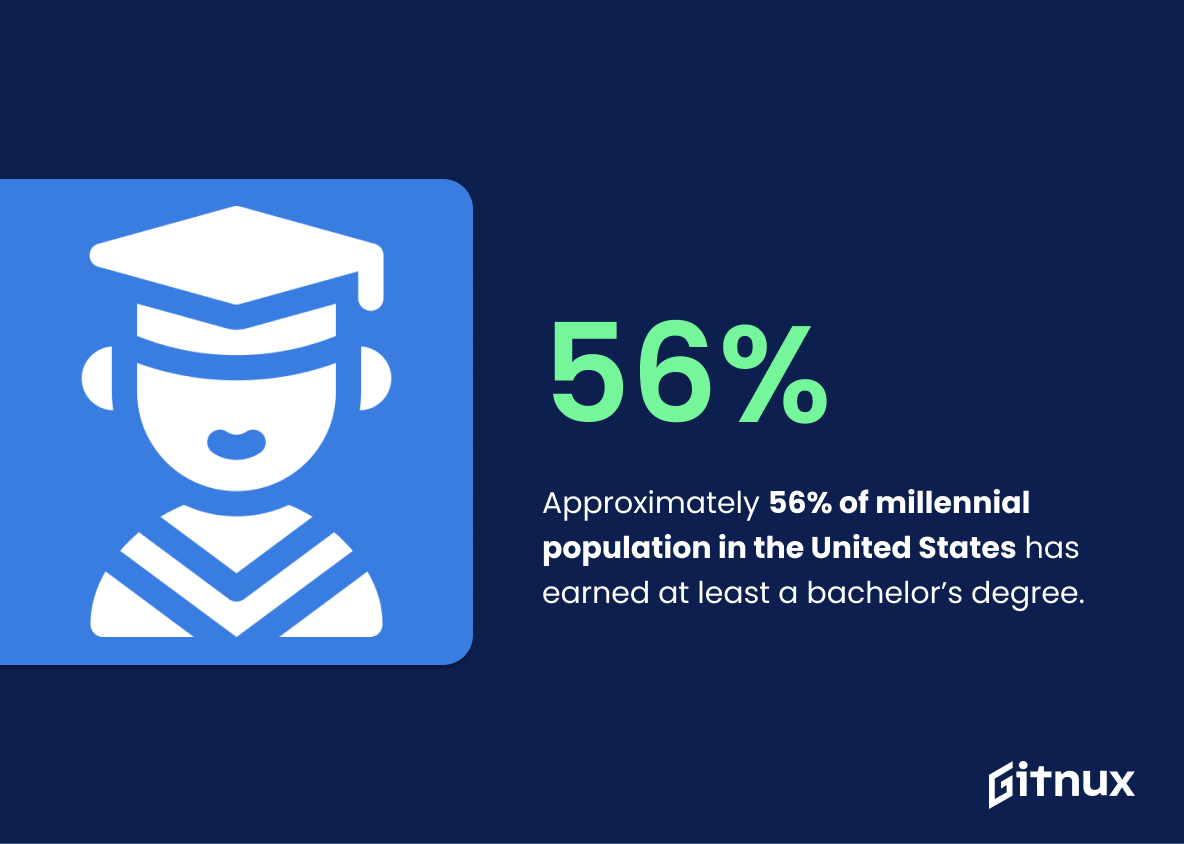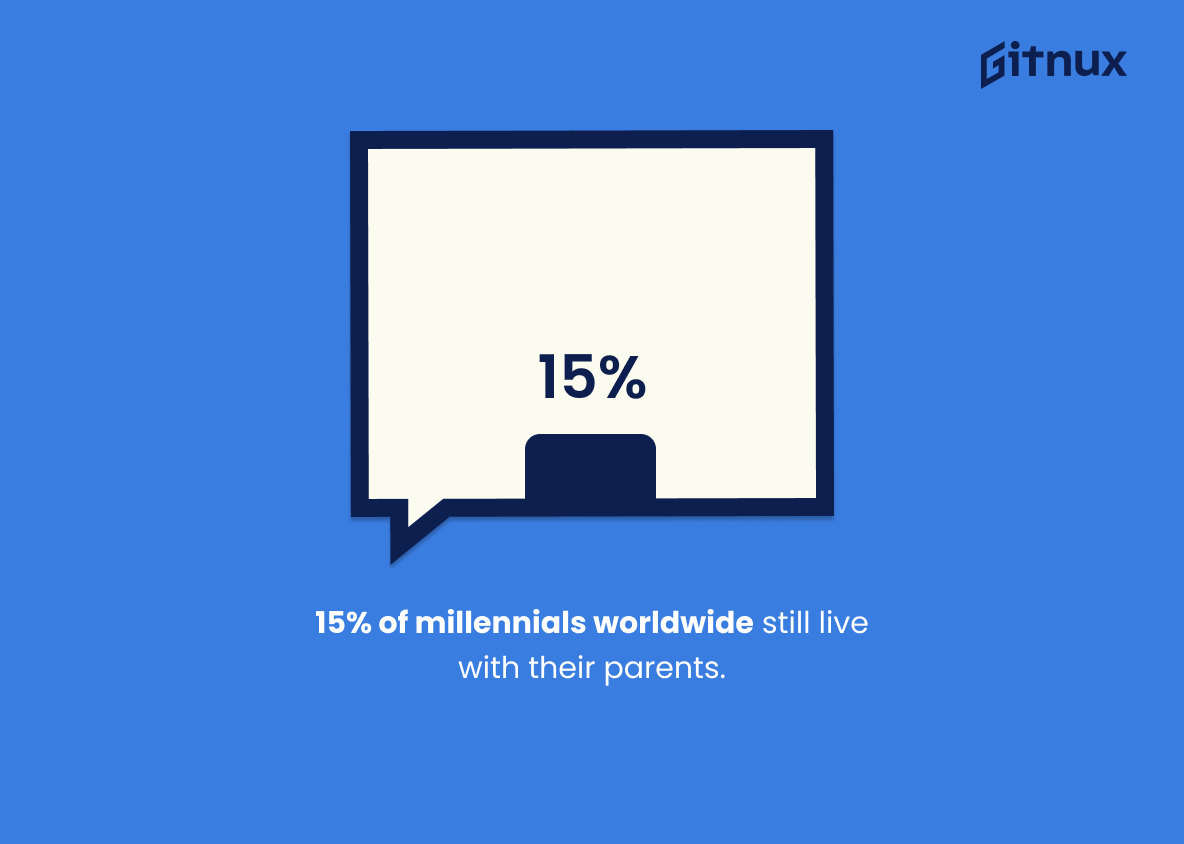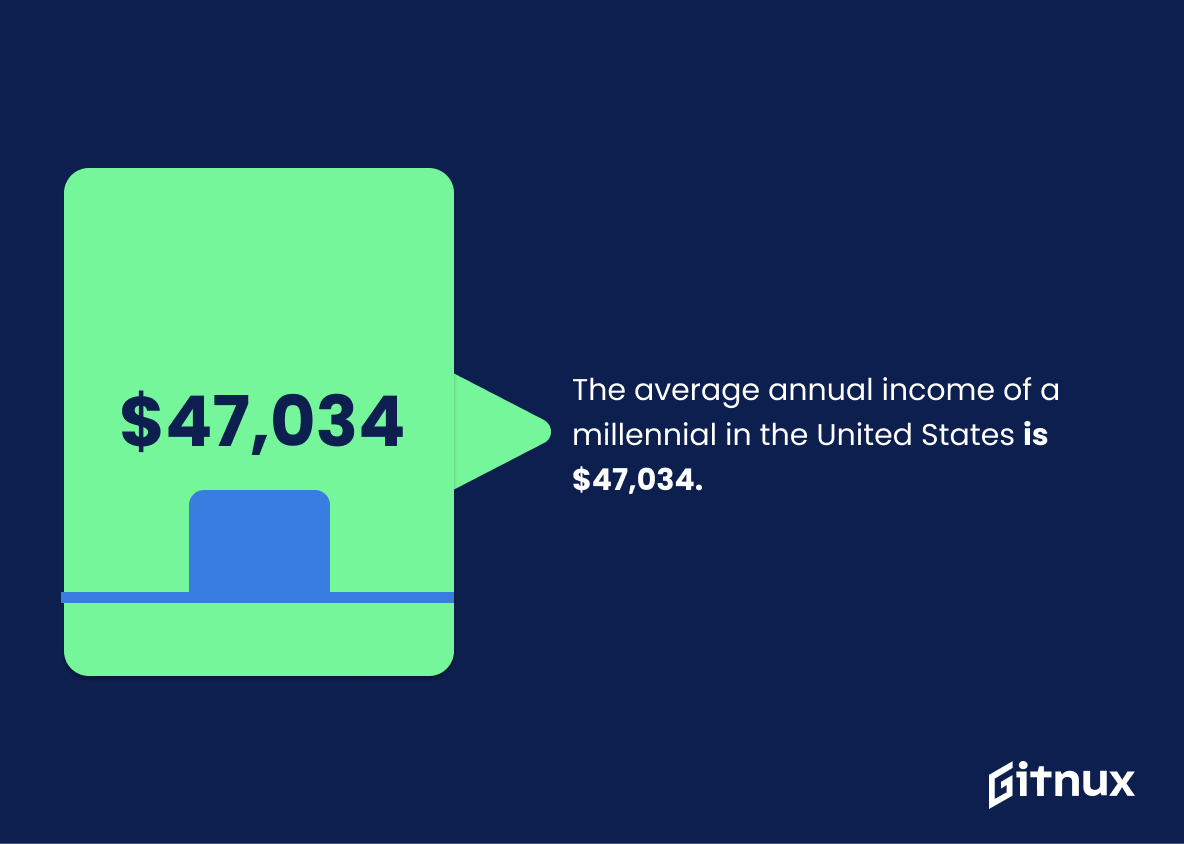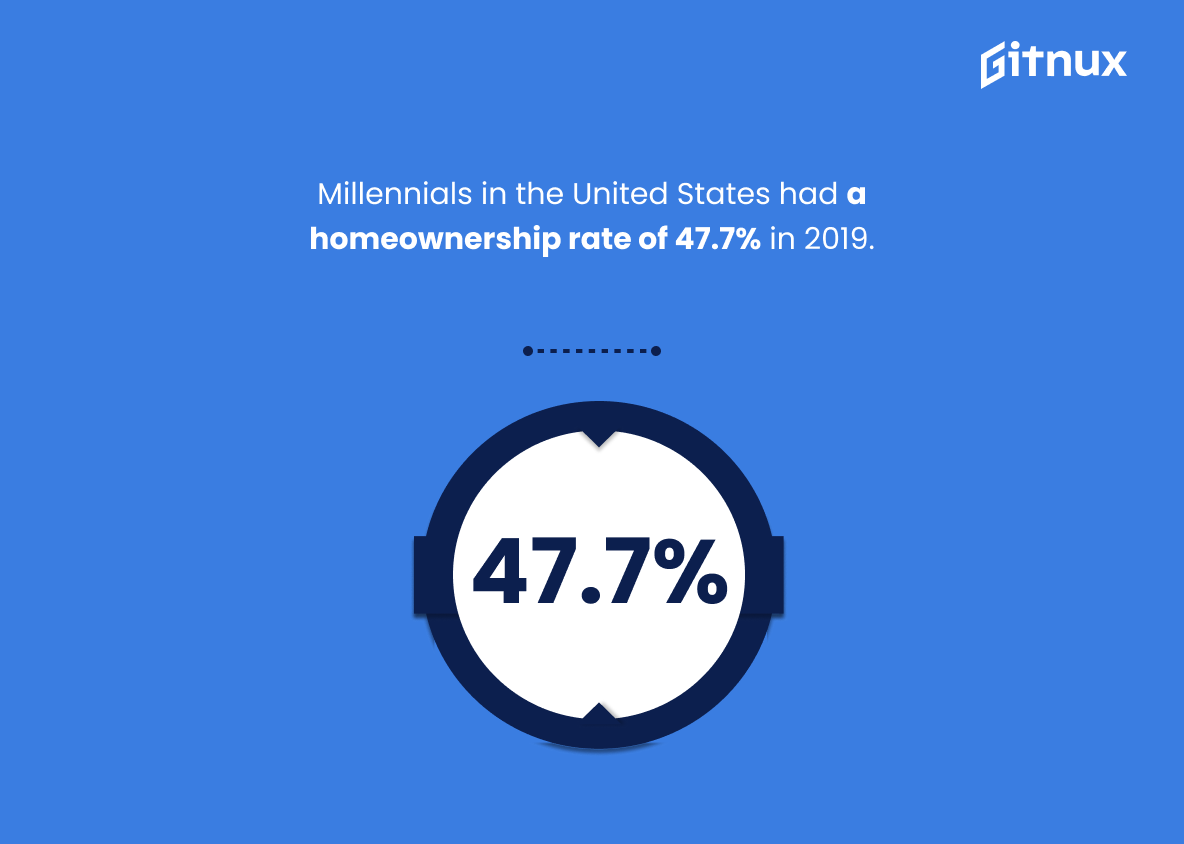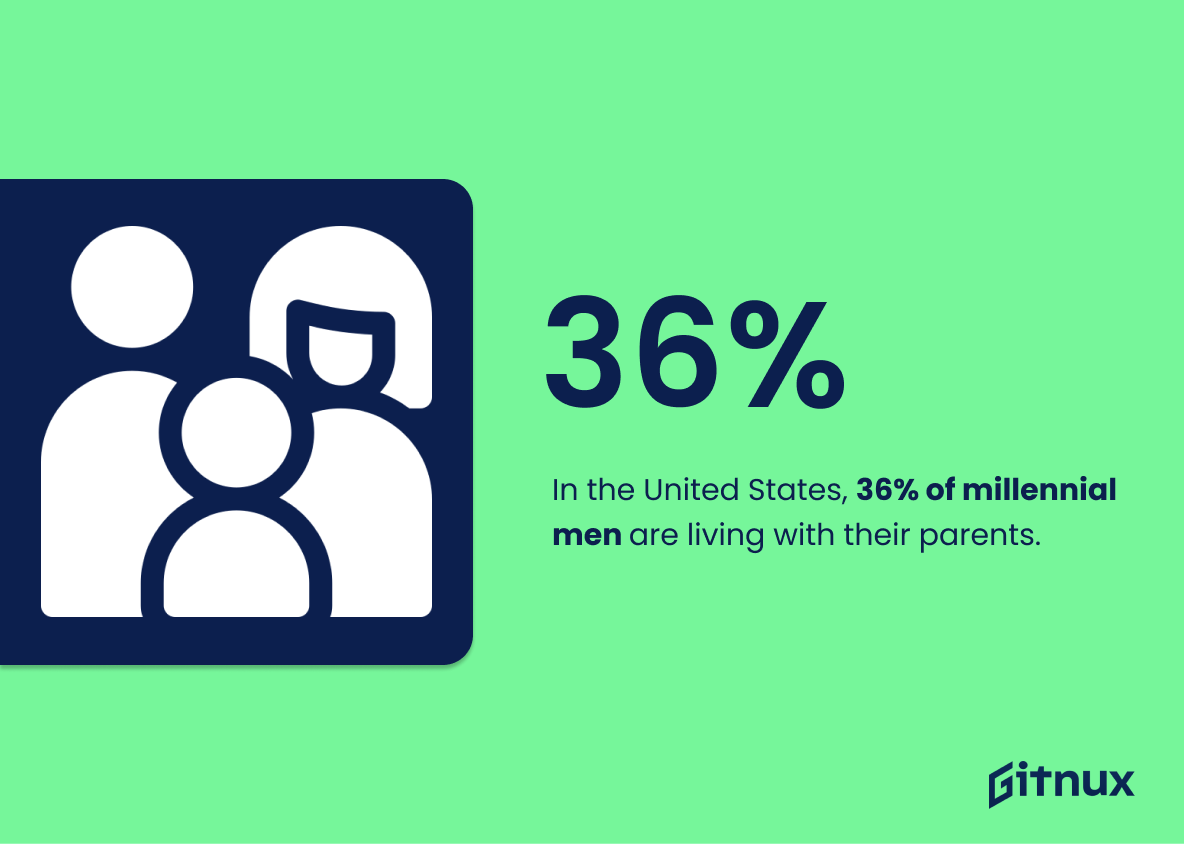Millennials are the largest living adult generation in 2020, representing approximately 27% of the global population. In this blog post, we will explore some interesting statistics about millennials around the world and in the United States. We’ll look at their educational attainment levels, employment status, homeownership rates, median net worths and more to gain a better understanding of who they are as a generation.
This statistic is a powerful indicator of the sheer size and influence of the Millennial generation. It highlights the fact that Millennials make up a significant portion of the global population, and thus, their opinions, values, and behaviors have the potential to shape the future of the world.
In the United States, millennials have surpassed Baby Boomers as the largest living adult generation in 2020.
This statistic is a significant milestone in the history of the United States, as it marks the first time that millennials have outnumbered Baby Boomers in the population. It is a testament to the growing influence of millennials in the country, and provides an important insight into the changing demographics of the nation. This statistic is essential to understanding the current state of the millennial population, and is an important factor to consider when discussing the impact of this generation on the future of the United States.
Millennial Population Statistics Overview
Approximately 56% of millennial population in the United States has earned at least a bachelor’s degree.
This statistic is a telling indication of the educational attainment of the Millennial population in the United States. It speaks to the level of education that this generation has achieved, and the potential that they have to contribute to the workforce and the economy. It is an important statistic to consider when discussing the impact of the Millennial population on the country.
15% of millennials worldwide still live with their parents.
This statistic is a telling indication of the current state of the millennial generation. It speaks to the financial and social pressures that many millennials face, and provides insight into the unique challenges that this generation is facing. It is an important statistic to consider when discussing the overall population of millennials, as it provides a glimpse into the lives of this generation.
44% of the millennial population in the United States identify as part of an ethnic or racial minority group.
This statistic is a powerful reminder of the diversity of the Millennial population in the United States. It highlights the fact that a significant portion of this generation is made up of individuals from different ethnic and racial backgrounds, and that this diversity should be celebrated and respected.
Millennials make up 35% of the workforce in the United States.
This statistic is a powerful indicator of the impact Millennials have had on the American workforce. It speaks to the sheer number of Millennials who are employed in the United States, and the influence they have on the economy. It is an important statistic to consider when discussing the Millennial population and its impact on the country.
Approximately 65% of millennials in the United States are renters.
This statistic is a telling indication of the current state of the millennial population in the United States. It speaks to the fact that a majority of millennials are not homeowners, and instead are relying on renting as their primary form of housing. This statistic is important to consider when discussing the financial and lifestyle choices of millennials, as it provides insight into the current trends and challenges they face.
By 2025, it is estimated that 75% of the global workforce will be made up of millennials.
This statistic is a powerful indicator of the changing landscape of the global workforce. By 2025, the majority of the workforce will be comprised of millennials, which will have a significant impact on the way businesses operate and the way the economy functions. This statistic is a reminder of the importance of understanding the needs and preferences of this generation in order to ensure success in the future.
Millennials in Europe represent approximately 24% of the total population.
This statistic is significant in understanding the impact Millennials have on the European population. It provides insight into the size of the Millennial demographic and how it compares to other age groups. This information can be used to inform decisions about marketing, policy, and other initiatives that may be tailored to the Millennial population.
Millennial voter turnout was estimated at 51% in the 2016 U.S. presidential election.
The 2016 U.S. presidential election saw an impressive turnout of Millennial voters, with an estimated 51% of the population casting their ballots. This is a testament to the power of the Millennial generation, demonstrating their commitment to making their voices heard and their influence on the political landscape. This statistic is a reminder of the importance of understanding the Millennial population and their impact on society.
The average annual income of a millennial in the United States is $47,034.
This statistic is a key indicator of the financial well-being of the Millennial generation in the United States. It provides insight into the economic opportunities available to this demographic, and how they are faring in comparison to other generations. It is an important piece of information to consider when discussing the overall economic health of the Millennial population.
Millennials in the United States had a homeownership rate of 47.7% in 2019.
This statistic is a telling indication of the current state of the Millennial generation in the United States. It reveals that, despite the many challenges they face, Millennials are still managing to make homeownership a reality for themselves. This statistic is a testament to the resilience and determination of the Millennial generation, and serves as a reminder of their potential to shape the future of the country.
In the United States, 36% of millennial men are living with their parents.
This statistic is a telling indication of the current state of the Millennial generation. It speaks to the financial struggles that many young adults are facing, as well as the difficulty of transitioning into independent adulthood. It is a stark reminder of the challenges that this generation is facing, and the need for solutions to help them become more financially secure.
Millennial median net worth in the United States is $8,256, roughly 40% less than Gen X’s net worth at the same age.
This statistic serves as a stark reminder of the financial struggles that Millennials face compared to their predecessors. It highlights the need for greater financial security and stability for this generation, and serves as a call to action for policy makers and other stakeholders to address the issue.
Conclusion
Millennials are a large and diverse generation, making up 27% of the global population. In 2020, they surpassed Baby Boomers as the largest living adult generation in the United States. Millennials have higher levels of educational attainment than previous generations; 56% have earned at least a bachelor’s degree in America. However, 15% still live with their parents worldwide and 44% identify as part of an ethnic or racial minority group in the US.
Millennials make up 35% of the workforce in America and 65% are renters there too. By 2025 it is estimated that 75 percent will be employed globally while 53 percent hold student loan debt domestically – averaging $33,000 per person this year alone. The average annual income for millennials is $47,034 but 40.2 % work within service sectors while only 36 % own homes compared to 47 .7%. Women represent 38 .3%, men 36%, net worth 8 ,256 USD (40 % less than Gen X). Finally 81 % check social media daily on average across all countries surveyed.. These statistics demonstrate how millennial life differs from prior generations both inside and outside of America today
References
0. – https://www.data.bls.gov
1. – https://www.census.gov
2. – https://www.zillow.com
3. – https://www.gallup.com
4. – https://www.medium.com
5. – https://www.pewsocialtrends.org
6. – https://www.ec.europa.eu
7. – https://www.forbes.com
8. – https://www.pewresearch.org
9. – https://www.fredblog.stlouisfed.org
10. – https://www.migrationpolicy.org
